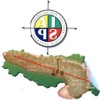Cohort Study of the Incidence of Extrapancreatic Neoplasm During Clinical and Radiological Surveillance of Patients with Branch-Duct IPMN
DOI:
https://doi.org/10.6092/1590-8577/1868Keywords:
Meeting Abstracts, PancreasAbstract
Context In the latest years, there has been controversy about the relationship between intraductal papillary mucinous neoplasms (IPMN) and the development of extrapancreatic neoplasms. While a number of prevalence studies confirmed this association, the only cohort studies available did not. Objective This is a cohort study of patients with branch-duct IPMN and without a personal history of other non-pancreatic neoplasms who were enrolled in a radiological surveillance protocol. The objective was to assess the incidence of extrapancreatic neoplasms during the follow-up period in comparison with that of the Italian general population. Methods Patients with well-documented branch-duct IPMN on cross-sectional imaging (MRI) and devoid of malignancy concern (according to an institutional protocol from 2000 until 2005 and to the IAP guidelines from 2005 and onwards) were enrolled in a radiological surveillance protocol on a yearly basis. The occurrence of other non-pancreatic neoplasms was recorded in a prospective database and the incidence was compared with the Italian tumor registry (AIRTUM). In particular, number of expected cases was calculated, and the standardized incidence ratio (observed/expected cases) with 95% CI was obtained. Risk function for the development of extrapancreatic neoplasms was then plotted according to the method of Kaplan and Meier. For the purposes of this study, follow-up was stopped on July 2013. Results Study population consisted of 472 patients observed over a 12-year period (2000-2012). Median follow-up was 44 months. Fifty-nine patients (12.5%) developed at least an extrapancreatic malignant neoplasm, for a total of 61 neoplastic events. Median time-to-presentation was 34 months. The most frequent neoplasms were breast cancer (n=15), renal clear cell carcinoma (n=7), colorectal cancer (n=5), melanoma (n=5), lung cancer (n=5), prostate cancer (n=4), and thyroid cancer (n=4). The cumulate incidence of extrapancreatic neoplasms in the study population was significantly greater than the expected incidence in the Italian population, with a standardized incidence ratio of 1.75 (95% CI: 1.33-2.26). According to the plotted risk function, the risk of developing a non-pancreatic neoplasm increased over time (1 year: 2%; 2 years: 4%; 5 years: 8%). Conclusion Patients with branch-duct IPMN have a 1.75 fold increase of non-pancreatic neoplasms during the follow-up period. This warrants sub-analyses by sex, age, type of neoplasm, and possible revision of follow-up protocols, with targeted tumor screening.


